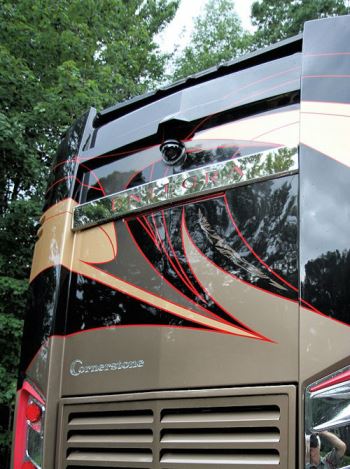A step-by-step installation of a Total Vision system.
By Mark Quasius, F333630
June 2016
Many of today’s new motorhomes come equipped with a rearview camera. It’s an important safety feature that serves several purposes.
For one, the camera helps ensure that people and objects are not struck by a motorhome as it backs up. Yes, spotters with two-way radios are a good idea, but there’s always a chance of miscommunication.

